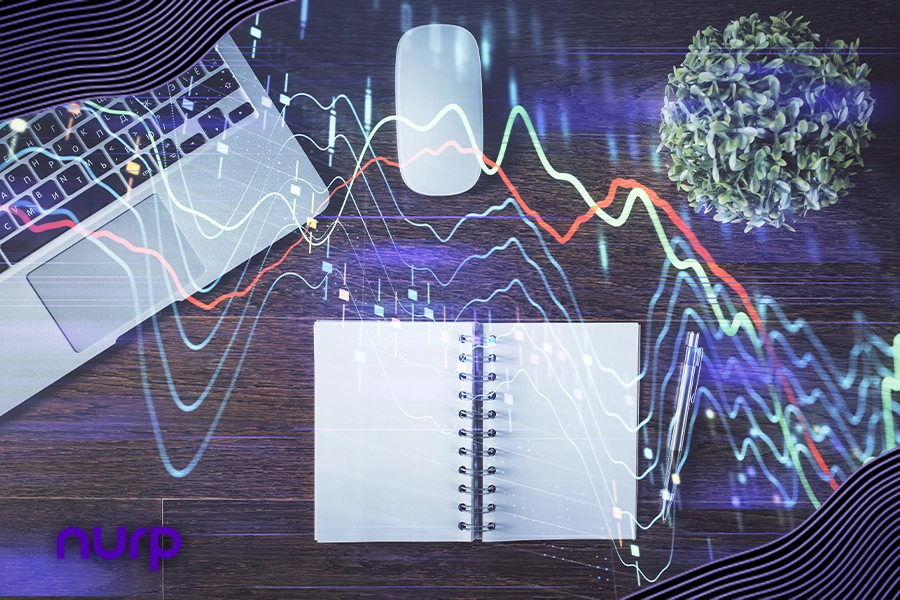I took $10,000 six weeks ago and put it into an algorithmic trading software. In this video, I want to go over the results over this period of time. Without further ado, let’s jump straight to it.
Welcome! If you’re new to the channel, my name is Matt Jimenez. I’m an entrepreneur who has worked with the greatest minds in finance for the last several years, and I’m here to share with you everything they’ve shared with me. If you’ve been on this channel before, you know I’m a big proponent of using algorithmic software in my portfolio and seeing how well it performs when measured against a variety of different assets. I love to track their data and performance over set periods of time.
In this video, I want to go over what has happened to the $10,000 since I started this account six weeks ago. More importantly, I want to show you exactly what the software looks like on the back end. It is Sunday, 6:00 p.m. Eastern time, so the market just opened, and you will actually get to see the software functioning live. This will give you a good idea of what it looks like and how it works. Enough rambling – let’s look at the data.
So, here is my latest account that I’ve set up. It is called the Dalio algorithm. The reason why I call it the Dalio algorithm is because I’m using the Dalio trading algorithm software provided by Nurp. The reason why I went with this one is because it has a hedging mechanism built into it. So, it’ll trade both long and short on the same exact pair that it’s trading. If I have open short positions, it’ll take open long positions to hedge that. But I’m not going to get into that right now. I’ll show you what that looks like when I open up the actual software and show you how it’s trading. For this purpose, I just want to show you exactly how well it’s done so far.
Keep in mind, this data has not been updated, so it’s lagging behind. I have MT5 on my phone, and the numbers are a little bit different on my MT5 versus MyFXBook. As you can see, here is my MT5 account. The reason why I bring it up is because I’m going to show you the difference between MyFXBook and my MetaTrader 5 account.
Now, let’s look at this. Over here, we have our equity curve and our account balance. I started the account on June 11th, but I had auto trading off up until the middle of July. So, technically, the software started trading around July 15th. Since that time, I’ve made 7.9% – almost 8% – from the middle of July to the current date, which is almost the end of August. My average monthly return is 3.14%. Again, it’s only been really one month of data, so this average is definitely going to change—maybe to the upside, maybe to the downside, I don’t know. But what I do know is we will be tracking it fully transparently so you can see exactly what’s going on.
I funded the account with $995. The reason being is because I ended up paying fees while trying to get the money over to my brokerage account, and that took out about $46. As you can see, the account balance is currently at $1,737.68.
Over here, you can see during the time when the Yen carry trade was unwinding because Japan raised their rates, markets were bleeding out across the board. Tons of markets took a massive hit, tons of firms got liquidated, and many people took a giant loss. Many algorithmic trading companies that were involved in the Yen trade definitely took a loss as well. But you can see here, my Dalio algorithm was not involved in any of that, which is quite interesting to see. I was only down 83% drawdown, which is not even 1%, during the crazy volatility that happened and caused my other account to get completely screwed.
This is why I’m a big proponent of diversifying across different trading software that have different strategies and trade different pairs.
It allows you to diversify that risk because, let’s say, you have all your eggs in one basket with one software. Now you’re subject to the volatility of that one software. But if you spread your eggs across multiple different software, you may not get caught up in something that could be detrimental to your account.
Enough rambling. I just wanted to show you the difference between what happened with this account during that time. As you can see, it didn’t really take much of a hit. But fast forward to August 2nd—there was tons of volatility, and I actually experienced a 5% drawdown on this account, which then, of course, recovered quite nicely and popped back up, leading to all this growth. I’m actually currently in a drawdown right now—it’s about 2%, roughly.
So let’s go ahead and scroll down. So far this month, as you can see, it’s $723 in profit. But let me show you this. Now, look at my MT5 account on my phone, which shows the profit. Hopefully, it’ll show it on the camera, but the number showing right now is $842.26 in profit. I’m technically up 8.42%, not the 7.9% I’ve been showing. And as you can see – hopefully, you can see, actually—there is the profit right there, over $800. Now, again, once this updates, I’m pretty sure MyFXBook will go ahead and reflect that.
I want to show you what has happened since I started this account. It’s taken a grand total of 285 trades. The profitability is 70%, so I’m losing 30% of the time and winning 70% of the time. Out of the 285 trades that it’s taken, I’ve won 199 of them and only lost 86. One thing that I’m actually very impressed by is this profit factor number right here. If you don’t know what the profit factor is, to put it simply, it’s how much you’re willing to risk in order to gain – your risk-to-reward ratio numbers. Mine is sitting at 2.16, and what that means is I am willing to gain 2.16 for every one that I have at stake. That is the simplest way I could break it down. But the higher the number, the better. So if this number was 1, that would mean I’m only willing to gain 1 to the 1 that I’m risking.
Here we are with the performance for August, which is 7.23%. And then again, in July, there were only about 10 days that the account actually traded – it was up 6.3%. In June, it was not active at all; I just had the money in there. I had some complications trying to set up the account and get it running, but nonetheless, it started running during the mayhem that was happening in the Yen and in many other assets as well.
Now, let me show you exactly what the software looks like. I’m going to pull up my trading account, and this is it live. The reason why I say it’s live is because the market’s actually just opened. So, scroll down—you’re seeing my balance, you’re seeing my equity, which is in the account being actively traded, so you can see the fluctuations up and down in it. And then you can see the margin levels, which is something you definitely want to pay attention to, especially during times of volatility. Like I said, I told you I was sitting at about a 2% drawdown. There is going to be tons of volatility coming into this week for the US dollar, which I’m going to be looking out for because I do have a few positions open on the US dollar at the moment.
To the far left, you can see all the different pairs that I have active trades in. As you can see, I have AUD/USD, and there is some Australian news coming out as well. So, I have Australian news coming out and US dollar news coming out, both of which are going to have some impact on the volatility of that pair, especially the dollar. The dollar has a lot of stuff coming out this week, so I think anyone who’s watching this—if you’re watching it before the news comes out – I can’t give financial advice, but what I can say is what I’m doing. And what I’m doing is paying close attention and putting proper risk parameters into the software. That way, if anything were to happen, and let’s say things went against me far too aggressively, I’ll be protected by stop losses and so forth.
There’s one thing that I always remind myself when it comes to investing: you can’t avoid losses, but you can control how much you lose. With that being said, on this account, I actually have a 15% stop loss. So, in the event something happens and the markets go completely crazy, worst case, I lose 15%, which is far better than losing something I can’t afford to lose. And when it comes to investing, I never invest anything that I can’t afford to lose. But you always want to keep capital preservation at the forefront of everything you do, which is why I have a 15% stop loss in the Dalio trading algorithm software. I think Nurp actually issues this one with a built-in stop loss from the start. I could be wrong—book a call and see if I am wrong. But I’m not here to sell you the software, nor am I here to give any advice on it because I am not the guy to do that. I’m just showing you guys exactly what I’m doing as a user.
So, I just clicked this little hat in the top right corner, and what’s interesting is if I ever want to change any of the settings on the account, everything is here. As you can see right here, it says “Basket Stop Loss in USD.” So, that’s 15%, meaning once the account is in a drawdown that goes beyond 15%, it’ll automatically close out the trades for me. So, even if I cannot get to Wi-Fi quick enough, open up my laptop quick enough, or just be attentive, I always have this stop loss in place to give me peace of mind.
Now, you can change these numbers to anything you want – if it’s 30% that you can stomach, 40%, 50% – it’s up to you. Again, none of this is ever financial advice; I’m just showing you what I’m doing personally. Let me go ahead and close this out. Also, another thing that I can do instead of just using the stop loss is manually close the trades out as easily as just hitting the X. Also, with MetaTrader on my phone, I can easily close out trades manually from my hands if I think I don’t want to be exposed to something that’s happening or if I want to increase the equity or the free margin that I have available to continue trading.
The number one thing that I can do as well during these volatile times is come up to this top bar up here. If I were to click that, it would turn off my auto trading, and it won’t take in any more trades. I am possibly considering doing this during the US dollar news, just so I stay out of the possibility of scaling into a position that’s going against me too aggressively. That’s something I’ll always keep at the forefront, and I will definitely be keeping my eyes on it.
If you found this interesting and want more updates on how this account is actually doing from month to month, I would be happy to share all the data with you. And if you’re interested in how you could potentially get one of these software programs in your portfolio, hit the link down below, and the team will see if it’s a good fit for you.
And like always, my friends, peace.
Please visit I Gave $10k To A Trading Software to watch the full video on YouTube!
The post I Gave $10k To A Trading Software first appeared on Nurp.com.





